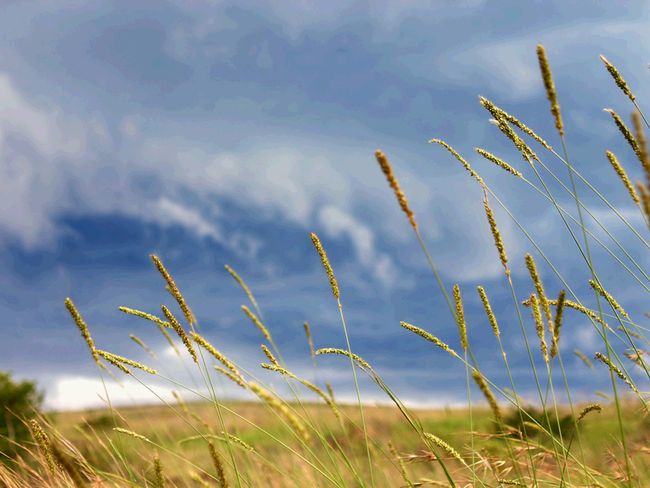图形图像处理-之-误差扩散 上篇
tag: 误差扩散,真彩色到高彩色转换
摘要: 在图像的颜色转换过程中,由于颜色值域的不同,转换过程中可能会产生误差;
误差扩散算法通过将误差传递到周围像素而减轻其造成的视觉误差。
正文:
代码使用C++,编译器:VC2005
测试平台:(CPU:AMD64x2 4200+(2.37G); 内存:DDR2 677(双通道); 编译器:VC2005)
A:程序将把一张真彩色图片转换成高彩色图片作为例子,颜色和图片的数据定义:
typedef unsigned short TUInt16;
typedef unsigned long TUInt32;
struct TARGB32 // 32 bit color
{
TUInt8 b,g,r,a; // a is alpha
};
struct TPicRegion // 一块颜色数据区的描述,便于参数传递
{
TARGB32 * pdata; // 颜色数据首地址
long byte_width; // 一行数据的物理宽度(字节宽度);注意: abs(byte_width)有可能大于等于width*sizeof(TARGB32);
unsigned long width; // 像素宽度
unsigned long height; // 像素高度
};
// 那么访问一个点的函数可以写为:
inline TARGB32 & Pixels( const TPicRegion & pic, const long x, const long y)
{
return ( (TARGB32 * )((TUInt8 * )pic.pdata + pic.byte_width * y) )[x];
}
//高彩色颜色和图片数据定义 (
{
TUInt16 b: 5 ;
TUInt16 g: 5 ;
TUInt16 r: 5 ;
TUInt16 x: 1 ;
};
struct TPicRegion_RGB16_555 // 一块颜色数据区的描述,便于参数传递
{
TRGB16_555 * pdata; // 颜色数据首地址
long byte_width; // 一行数据的物理宽度(字节宽度)
unsigned long width; // 像素宽度
unsigned long height; // 像素高度
};
inline TRGB16_555 & Pixels( const TPicRegion_RGB16_555 & pic, const long x, const long y)
{
return ( (TRGB16_555 * )((TUInt8 * )pic.pdata + pic.byte_width * y) )[x];
}
例子中使用的16bit高彩色的RGB颜色编码为555; 常见的编码方式还有565和655,某些程序
里面可能还会使用4:4:4:4 (4比特Alpha通道); (提示:利用宏或泛型的方式可以用一个函数
实现同时支持这些格式)
B:真彩色图片直接转换成高彩色图片的简单实现
TRGB16_555 result;
result.r = color.r >> 3 ;
result.g = color.g >> 3 ;
result.b = color.b >> 3 ;
return result;
}
void CvsPic32To16_0( const TPicRegion_RGB16_555 & dst, const TPicRegion & src){
for ( long y = 0 ;y < src.height; ++ y){
for ( long x = 0 ;x < src.width; ++ x){
Pixels(dst,x,y) = ToColor16(Pixels(src,x,y));
}
}
}
来看一下函数效果
源图片(800x600):
转换后图片:
可以看到,颜色位数的降低,很多区域都产生了失真的色块
速度测试:
//////////////////////////////////////////////////////////////
//CvsPic32To16_0 204.5 FPS
//////////////////////////////////////////////////////////////
C:对直接转换函数的简单速度优化(功能一样)
return ((color.r >> 3 ) << 10 ) | ((color.g >> 3 ) << 5 ) | (color.b >> 3 );
}
void CvsPic32To16_1( const TPicRegion_RGB16_555 & dst, const TPicRegion & src){
TUInt16 * pDst = (TUInt16 * )dst.pdata;
const TARGB32 * pSrc = src.pdata;
const long width = src.width;
for ( long y = 0 ;y < src.height; ++ y){
for ( long x = 0 ;x < width; ++ x){
pDst[x] = ToColor16_1(pSrc[x]);
}
(TUInt8 *& )pDst += dst.byte_width;
(TUInt8 *& )pSrc += src.byte_width;
}
}
速度测试:
//////////////////////////////////////////////////////////////
//CvsPic32To16_1 507.9 FPS
//////////////////////////////////////////////////////////////
(当然,该函数还可以继续优化的,比如使用MMX、SSE等指令,可以得到更快的速度;)
D:误差扩散的颜色转换函数实现
转换过程中,将产生的转换误差,按一定的系数向右和向下传递(这样写代码比较容易);
我使用的误差传递系数为:
* 2
1 1 0 /4
其他一些常见的误差传递模板(也可以自己设定合适的模板系数系数),可以尝试一下其转换效果
* 3
0 3 2 /8
* 7
3 5 1 /16
* 8 4
2 4 8 4 2
1 2 4 2 1 /42
我使用了一个较为简单的模板,为质量、速度、额外空间占用做了折中;
简单的实现:
float dR;
float dG;
float dB;
};
inline long getBestRGB16_555Color_0( const float wantColor){
float result = wantColor * ( 31.0 / 255 );
if (result <= 0 )
return 0 ;
else if (result >= 31 )
return 31 ;
else
return ( long )result;
}
void CvsPic32To16_ErrorDiffuse_Line_0(TUInt16 * pDst, const TARGB32 * pSrc, long width,TErrorColor_0 * PHLineErr){
TErrorColor_0 HErr;
HErr.dR = 0 ; HErr.dG = 0 ; HErr.dB = 0 ;
PHLineErr[ - 1 ].dB = 0 ; PHLineErr[ - 1 ].dG = 0 ; PHLineErr[ - 1 ].dR = 0 ;
for ( long x = 0 ;x < width; ++ x)
{
// cB,cG,cR为应该显示的颜色
float cB = (pSrc[x].b + HErr.dB * 2 + PHLineErr[x].dB + PHLineErr[x - 1 ].dB);
float cG = (pSrc[x].g + HErr.dG * 2 + PHLineErr[x].dG + PHLineErr[x - 1 ].dG);
float cR = (pSrc[x].r + HErr.dR * 2 + PHLineErr[x].dR + PHLineErr[x - 1 ].dR);
// rB,rG,rR为转换后的颜色(也就是实际显示颜色)
long rB = getBestRGB16_555Color_0(cB);
long rG = getBestRGB16_555Color_0(cG);
long rR = getBestRGB16_555Color_0(cR);
pDst[x] = rB | (rG << 5 ) | (rR << 10 );
// 计算两个颜色之间的差异的1/4
HErr.dB = (cB - (rB * ( 255.0 / 31 ))) * ( 1.0 / 4 );
HErr.dG = (cG - (rG * ( 255.0 / 31 ))) * ( 1.0 / 4 );
HErr.dR = (cR - (rR * ( 255.0 / 31 ))) * ( 1.0 / 4 );
PHLineErr[x - 1 ].dB += HErr.dB;
PHLineErr[x - 1 ].dG += HErr.dG;
PHLineErr[x - 1 ].dR += HErr.dR;
PHLineErr[x] = HErr;
}
}
void CvsPic32To16_ErrorDiffuse_0( const TPicRegion_RGB16_555 & dst, const TPicRegion & src){
TUInt16 * pDst = (TUInt16 * )dst.pdata;
const TARGB32 * pSrc = src.pdata;
const long width = src.width;
TErrorColor_0 * _HLineErr = new TErrorColor_0[width + 2 ];
for ( long x = 0 ;x < width + 2 ; ++ x){
_HLineErr[x].dR = 0 ;
_HLineErr[x].dG = 0 ;
_HLineErr[x].dB = 0 ;
}
TErrorColor_0 * HLineErr =& _HLineErr[ 1 ];
for ( long y = 0 ;y < src.height; ++ y){
CvsPic32To16_ErrorDiffuse_Line_0(pDst,pSrc,width,HLineErr);
(TUInt8 *& )pDst += dst.byte_width;
(TUInt8 *& )pSrc += src.byte_width;
}
delete[]_HLineErr;
}
和上面的直接转换效果对比,色深一样但质量明显好了很多:)
(可以放大该图片来看看,对颜色误差的传递会有一个更好的认识)
速度测试:
//////////////////////////////////////////////////////////////
//CvsPic32To16_ErrorDiffuse_0 33.6 FPS
//////////////////////////////////////////////////////////////
